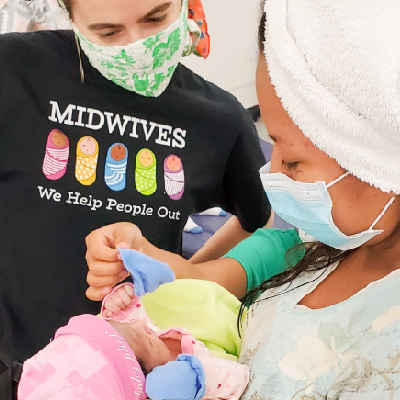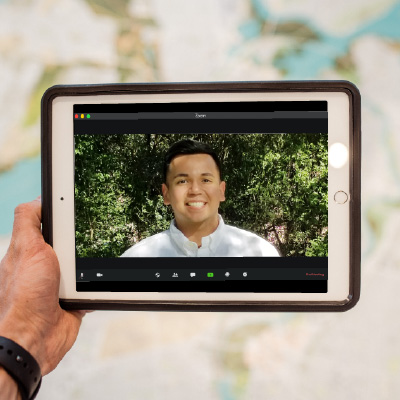- Who We Are
- Clinician Employment
- Publications
- Witness to Witness (W2W)
- El Premio Kugel & Zuroweste a la Justicia en la Salud
- Your Voice Matters: Photovoice Project
Thu, 06/08/2017 | by Claire Hutkins Seda


[Editor’s Note: Health Network, MCN’s bridge case management system, does more than just records transfer. What do Health Network Associates do to make sure patients are able to complete their treatment even when on the move? Here’s a case study from last year that demonstrates the complexity of the work, and the many hours our Associates put in for each mobile patient. P.S. If you like the work that we do, please support Health Network with a donation. You can learn more about Health Network and how to enroll here.]
Health Network cases aren’t just a matter of setting up appointments; the illnesses and treatment regimens that patients face often inflict significant stress and emotional turmoil on the patients, the family members -- and even the clinicians involved in the case. Health Network Associates are sometimes the first to break bad news, and to provide phone counseling for those affected.
Last year, Ha’ng*, a 75-year-old US citizen, went to her local health clinic for her cough before she left for a two-week vacation to visit her homeland, Vietnam. Tuberculosis cultures and smears were taken before she left, but the attending doctor did not believe she had the disease, and green-lighted her travel before test results returned.
Unfortunately, her test results returned positive for TB. The clinic reported the results to the Centers for Disease Control and Prevention, who contacted Health Network.
“You have to be on treatment for two weeks before you’re no longer considered contagious,” Health Network Associate Olivia Hayes explained. “For this patient, we had to find her in Vietnam, tell her she was contagious, find her a doctor, transfer records to the hospital, and get her started on medications. Once she was on treatment for two weeks, we needed sputum results eight hours apart. Three smears needed to come back negative before she could return to the US.”
This was not in the patient’s travel plans. She and her husband extended their trip by several weeks. Because the illness caused them to leave the country for such an extended period of time, they lost their social security eligibility and their checks were stopped. As they are US citizens, they did not receive free health care in Vietnam. The patient and her husband were traveling with their two adult children. Both children had to fly back to the US to return to work, but one had to schedule to fly again to Vietnam to assist her elderly parents in returning to the US.
“Between the extra plane ticket and the health care costs, they were extremely frustrated,” Olivia recalled, when she spoke to the patient’s children. “They couldn’t really understand why all these things were needed by the CDC to allow their mother to come home.” Olivia spent extra time on the phone with family members to assure them of the necessity of the treatment plan while hearing out and validating their reactions to it.
In addition to the emotional support, Olivia attended to the logistical concerns. At first, Olivia had trouble finding sufficient care for the patient. “The first doctor I found for them, just five miles away, was unable to do the sputum tests,” she said, so she followed up with Vietnam’s National TB program which referred her to another hospital further away. Olivia sent records to the hospital and assured that the patient got the appointments and treatment she needed. After the patient began treatment, the hospital reported that the patient was okay to fly. “But the CDC didn’t accept the records they sent, because there weren’t any lab results. The hospital countered that that’s how they do things there, and they weren’t going to give anything else.”
After significant back-and-forth between the hospital in Vietnam and health authorities in the US, Olivia received lab results in Vietnamese. When translated, they only showed two lab tests. After more wrangling, she was able to confirm through phone and email that Ha’ng had in fact undergone the necessary three lab tests.
After Ha’ng and her husband returned, a month later than planned, Olivia kept up with the patient every two months to assure she was managing treatment and had no additional plans to travel. Ha’ng completed her treatment in the early summer, after which Olivia closed this case.
Such a case -- entailing high emotions from the patient and patient’s family, plus complications between the patient’s health practitioners and health authorities -- is a rarity, Olivia says. While coordinating care and records transfer, she was also working closely with the family. “They were in a stressful and frustrating situation as well, because of their income. It was extremely hard and burdensome on the family,” she noted. Over the seven weeks she worked on the case, she had 38 contacts related to the case.
Health Network’s bridge case management goes far beyond records transfer. With careful case management, family support, and diligent follow-up, Olivia managed to assure that Ha’ng promptly received the full regimen of care she needed, effectively reducing the spread of TB not just here in the US but internationally.
Watch our short video series and learn more about Health Network on our Health Network page. Clinicians can learn more about enrolling patients on our enrollment page.
*The name of the patient has been changed to protect her identity.
Like what you see? Amplify our collective voice with a contribution.
Got some good news to share? Send it to us via email, on Facebook, or on Twitter.
Return to the main blog page or sign up for blog updates here.







